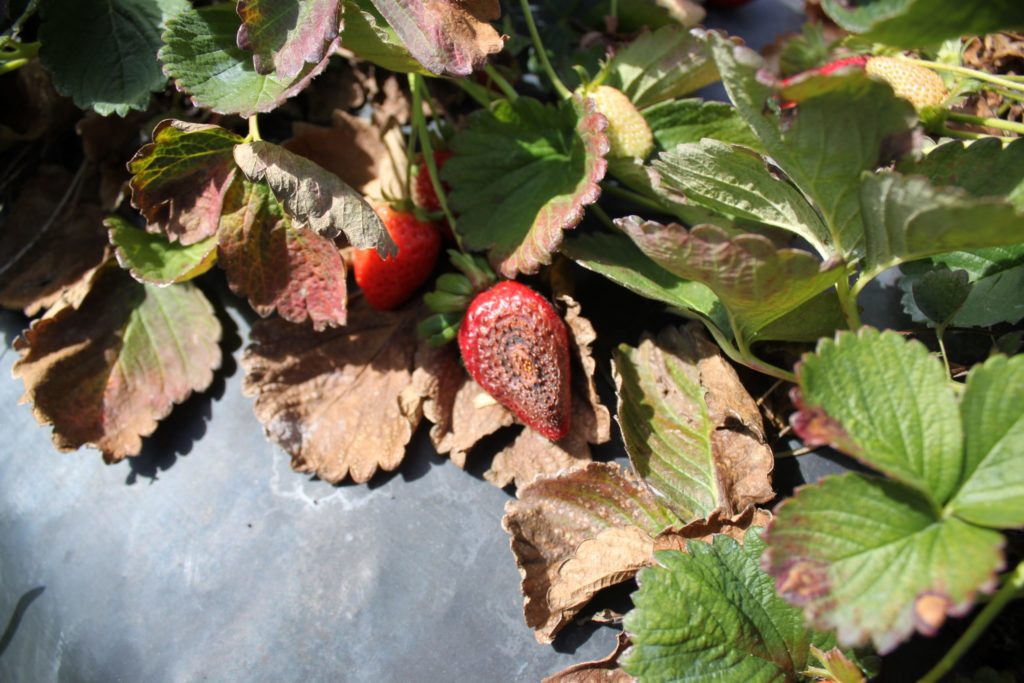By Clint Thompson
Neopestalotiopsis has been confirmed in Florida strawberries this season. Phil Brannen, University of Georgia Cooperative Extension fruit disease specialist, cautions growers to be on the lookout for the disease.

“It mimics just about every disease that we’ve ever known in strawberries. People are looking at some of these things and wondering, ‘Is this it?’ I tell them to send to the lab, because we can’t tell from the photos,” Brannen said. “So far, we have not received a sample where we’ve identified it as being Neopestalotiopsis.
“Based on what the experience has been in Florida, it does appear to be so driven by rainfall. When you just have a lot of really heavy rains, it really brings it out. It seems to be that heavy, prolonged wetting that really is required to make it just take off. My concern is what we will see on the other side of winter when it starts warming up in the spring and we get a lot of rainfall then. That’s normally when it really starts to show up.”
Rotation is Best

Brannen said the best way to overcome Neopestalotiopsis is for growers to rotate their crop from field to field, if possible.
“It’s better to rotate away from the field if you can, if you have the space to rotate. They don’t have those kinds of options down in Florida, and a lot of our guys don’t either,” Brannen said. “Where they have U-pick operations, they don’t have but a few acres and go back to that same site year after year and fumigate between times. If you’re in a field where you have it and you can’t rotate, then you definitely want to clean it up as much as possible. That means going in and pulling up as much of the plant debris as you can and getting it out of the field and destroying it. That’s extra cost.”
Neopestalotiopsis causes leaf spots on strawberry plants. It develops quickly and produces spores on the leaves. It can cause severe leaf spotting and fruit rot under favorable weather conditions.









